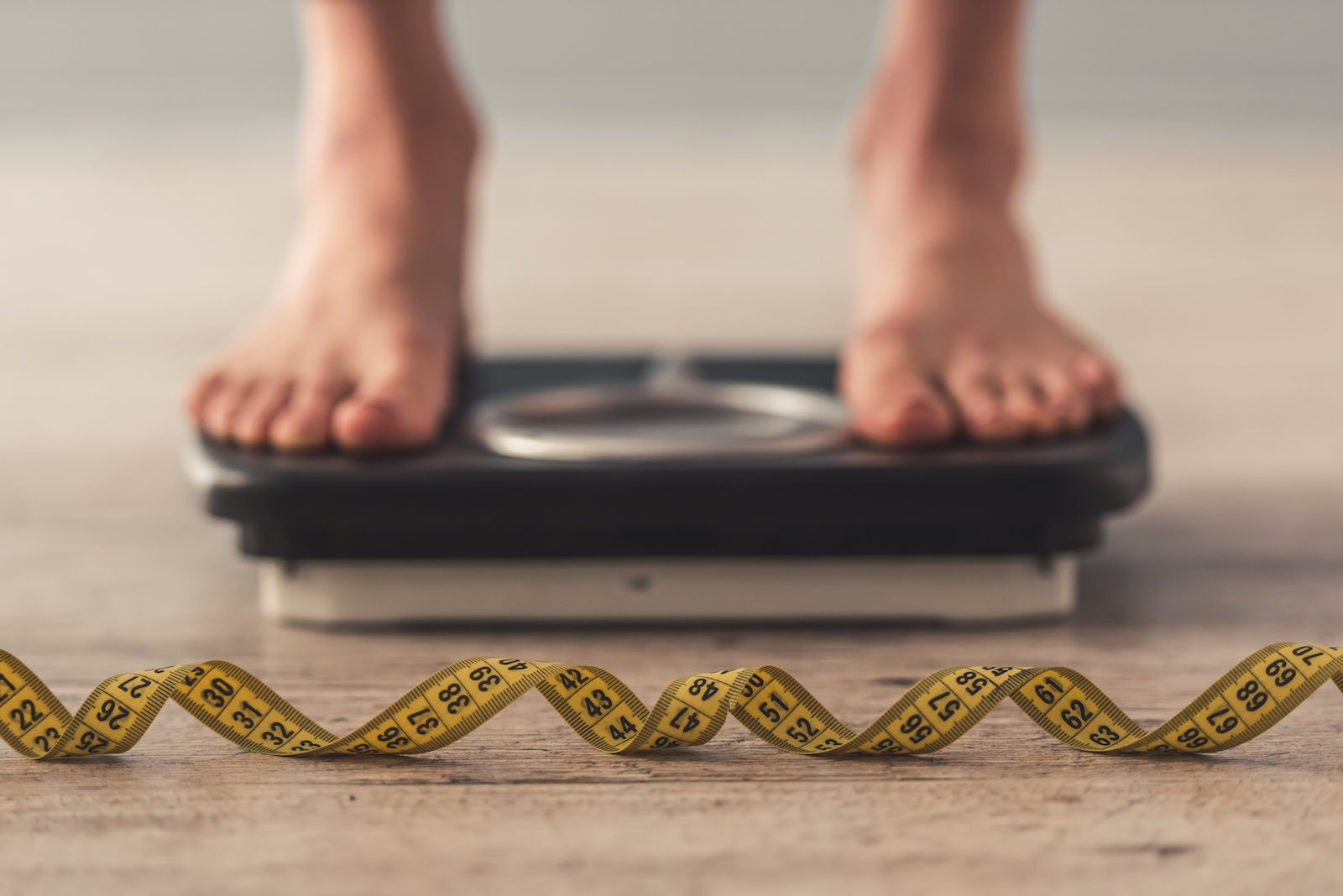
Table of Contents
Most people have heard of anorexia and know more or less what it is. Most people, however, do not know that there are variations of anorexia. While they can all damage physical and mental health, one particularly harmful form is atypical anorexia nervosa or simply atypical anorexia.
When the term anorexia is heard, most people automatically picture a skinny or dangerously thin person. In some cases, this can be accurate, but dangerous eating disorders are often not seen simultaneously with super low body weight. Many people diagnosed with an eating disorder may already be at a healthy weight and, in some cases, potentially overweight.
When the individual is at a normal weight and body composition or even overweight, it does not reduce the seriousness or potential danger of having an eating disorder. This is why atypical anorexia has been included in the recent DSM-V update. Atypical anorexia features many of the same traits of conventional anorexia, aside from low body weight.
What is Atypical Anorexia?
Atypical anorexia generally refers to the accumulation of intense fear regarding potentially gaining weight, often to extreme caloric restriction without showing sudden extreme weight loss or chronically low body weight. This is one reason that individuals with atypical anorexia can display a higher-than-normal or normal body weight.
It is a common misconception that eating disorders are less severe for people with more mass or higher body weight. Research, however, has shown time and time again that the facts about atypical anorexia indicate that anyone can have an eating disorder regardless of body type.
Individuals suffering from atypical anorexia still struggle with the difficult mental processes and thought patterns that create difficult relationships with their bodies, food, and weight. No matter how or if atypical anorexia affects an individual’s size, shape, or weight, it remains an incredibly serious condition that must be addressed.
What Qualifies as Atypical Anorexia?
The diagnosing criteria that determine an atypical anorexia diagnosis are generally much different than typical anorexia nervosa conditions. However, although there are important fundamental differences, there are still many common traits and similar characteristics. Some commonalities or shared traits include fear of weight gain, restricted caloric intake, and an extreme and unhealthy priority or importance on body shape, weight, or physical appearance.
When contrasting the two conditions, however, there are several stark differences. The first is that those who are dealing with atypical anorexia are not yet experiencing severely underweight conditions and have not yet displayed sufficient weight loss to be diagnosed. This is one of the key differences and one of the diagnostic criteria for atypical anorexia.
Since individuals with atypical anorexia are normal or above normal weight, the eating disorder will be difficult to identify based on appearance. That being said, many physical and psychological behaviors indicate atypical anorexia disorder.
Some of these atypical anorexia signals can include:
- Obsessing their body shape, size, or weight
- Body dysmorphia, or seeing themselves as a bigger body size than what is reality
- Being very rigid about eating schedules, routines, or amounts
- Avoiding situations, events, or occasions where food is present or may be served
Just as is seen in typical anorexia, those individuals dealing with atypical anorexia will not only severely restrict their caloric intake but will often use food denial and further restriction as coping methods. These coping methods may be used in response to any number of different triggers, such as daily stress, consistent feelings of body dysmorphia or dissatisfaction, or feelings of depression.
Dangers & Risks Associated With Atypical Anorexia
Having atypical anorexia, whether diagnosed or undiagnosed, can begin to take over an individual’s daily life, severely affecting both body and mind. People with this particular eating disorder can see their thoughts dominated by food and their body, day in and day out. This includes constant calorie calculation or counting, making excuses to avoid situations or events that will have food, and constantly obsessing about their body weight, composition, or size.
This can be incredibly disrupting for their social life and many other social and mental health aspects. Problems with work, circles of friends, and family relationships can also manifest in those with atypical anorexia due to various factors, including gaps in proper nutrition and mental health issues such as anxiety, panic disorders, or depression.
Even though individuals with atypical anorexia do not display the severe weight loss or dangerous underweight conditions that many diagnosed with typical anorexia generally display, some other serious effects and risks cannot be ignored.
These dangers can include:
- Dangerously low heart rate
- Faint pulse
- Low blood pressure
- Dizziness, lightheadedness, or a tendency to faint
- Increase in symptoms of anxiety disorder, panic disorder, or obsessive-compulsive disorder
- Thoughts of self-harm or even suicide
Some research indicates that the body image problems experienced by people with atypical anorexia may be higher than those with typical anorexia. This additional distress may be linked with the lack of a reward or payoff frequently associated with significant weight loss. In addition, this increased mental stress can cause increased rigidity with the calorie restriction regimen due to frustration, causing the individual to become more and more desperate.
How to Get Help For Atypical Anorexia
When you or someone you know is potentially suffering from atypical anorexia, the first and most important step in getting help is to reach out to someone you trust to begin building your support network. After that, the best move is to work with local treatment professionals to address the triggers and issues at the root of the atypical anorexia. This will enable greater recovery chances and better mental health in the future.
If you or a loved one are struggling with an eating disorder or seeking a luxury drug rehab, Ocean Recovery is here to help. There is help, support, and guidance for you to be able to walk on the path to freedom right now. Our Newport Beach rehab helps women with eating disorders find hope and healing.
Reach out today if you or a loved one needs liberation from the bondage that an eating disorder can create. You deserve the peace and fulfillment from living a life you have always dreamed about.
Was this article helpful? Follow our blog for more information about substance use, addiction, and recovery. Recent posts include topics such as neuroplasticity and addiction recovery, and the biggest therapeutic myth.
Sources:
Ocean Recovery has strict sourcing guidelines and relies on peer-reviewed studies, academic research institutions, and medical associations for our references. We avoid using tertiary references as our sources. You can learn more about how we source our references by reading our editorial policy.
1. Grey H. What It’s Like to Live with Atypical Anorexia. Published June 19, 2019. Accessed July 31, 2022. https://www.healthline.com/health/anorexia-athletica
OCEAN RECOVERY EDITORIAL GUIDELINES
The internet contains a vast amount of misinformation, but when it comes to your health only peer reviewed, research centered data matters. At Ocean Recovery, all content published throughout our website has been rigorously medically reviewed by a doctorate level clinician, and cross checked for medical accuracy. Our editorial process helps our readers trust that the information they are consuming is factual and based upon scientific data. Your health is our top priority, find out more about how we safeguard the integrity of information on our website. Read More About Our Process






